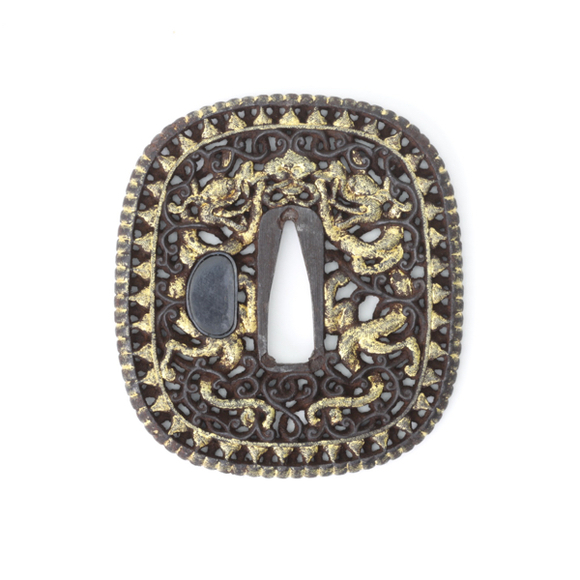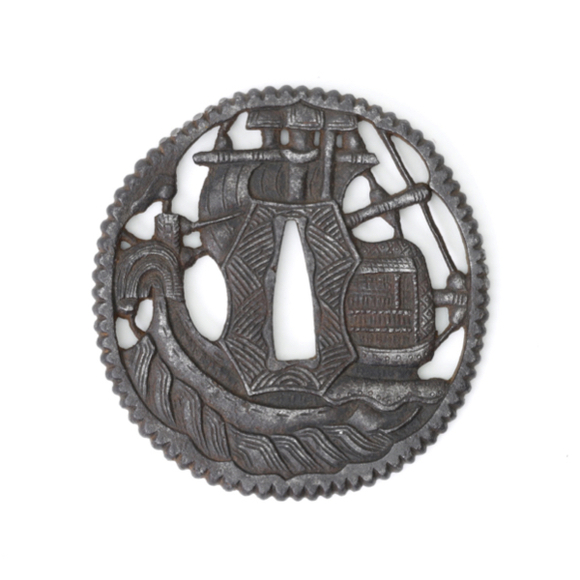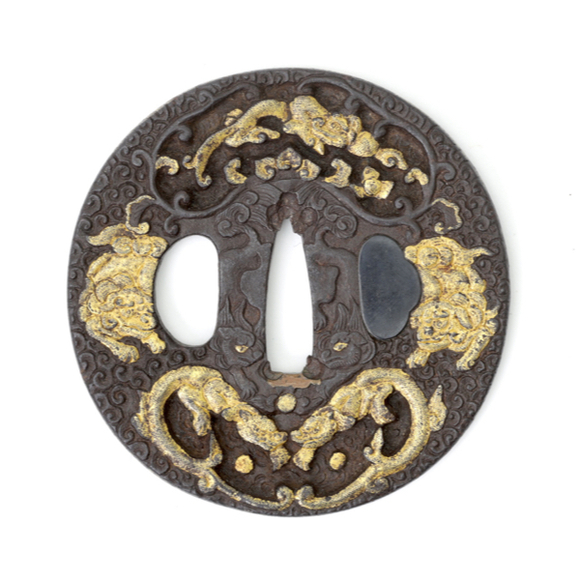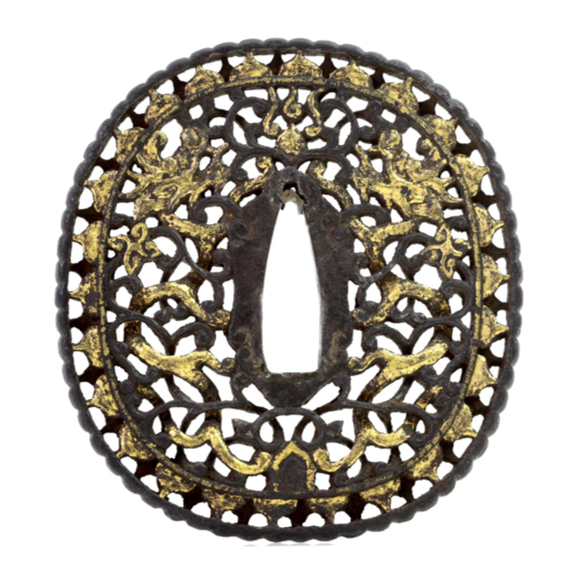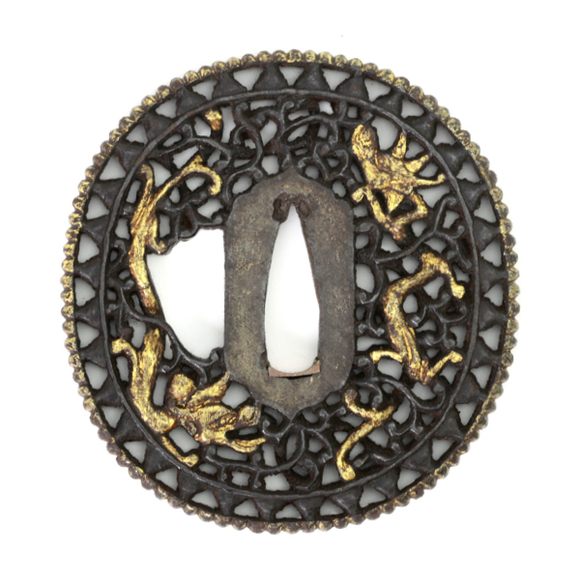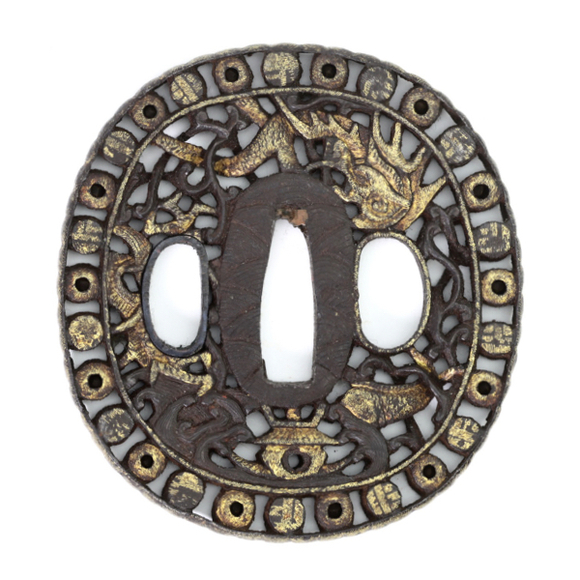Of pierced iron, elaborately cut with lotus petal border.

82 x 78 x 4.3 mm
127 grams
Iron, gold, silver
Chinese craftsmen in China or Nagasaki
17th or 18th century
European antique art market
Introduction
Among nanban tsuba and Asian export sword guards, there is a clearly distinct group of sword guards that are typically rather well made, and usually show foreigners mixed with Chinese subjects. They are either of aoi-gata (hollyhock form) or circular to oval, with beaded rims.
I believe these were made in China, or at least by Chinese craftsmen, for the Japanese market. There is also a possibility they were made in the sizeable Chinese community in Nagasaki Chinatown.

A group of sword guards that are clearly from this school.
Presented in this article is one of the better guards from this group.
Description
A large and fine sword guard. The shape is aoi-gata which is typically used for tachi and handachi swords. It has two, gold lined hitsu-ana and raised cloud motifs around the nakago-ana.
The facing side is decorated with two foreign figures, probably Dutch or Portuguese. One is holding a large fan on a stick while the other is blowing a horn. At the top is a grotesque face, in the bottom a large flower. The background is decorated with raised vines. The reverse is decorated with on the bottom a sacred jewel, several unusual looking flowers among vines and a sacred scroll. All raised elements are decorated with gold or silver.
The rim is decorated with very fine scrolling vines, overlaid in gold.





In the style of northern work of the 16th and 17th centuries
Canton work for the Japanese market, with 28 metal balls in separate compartments.

